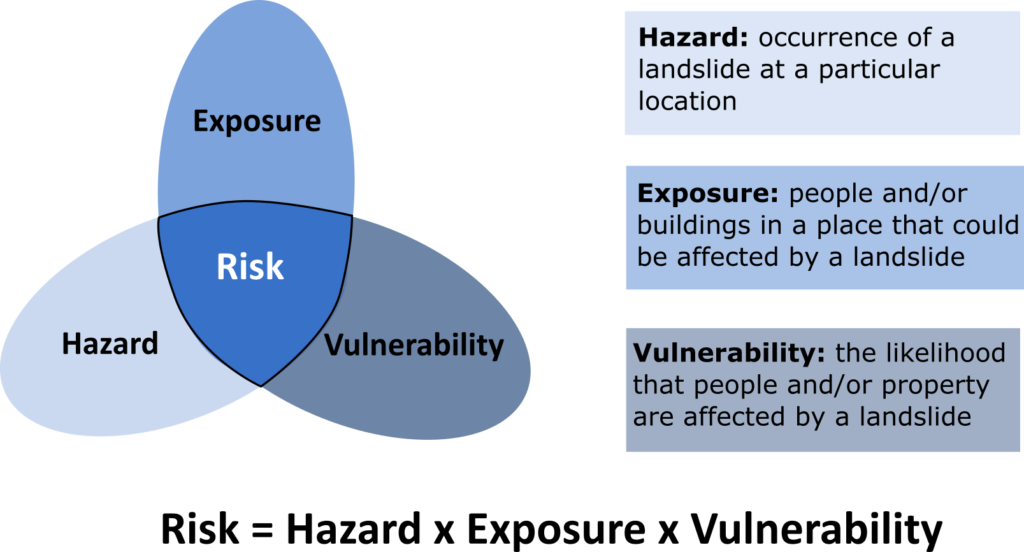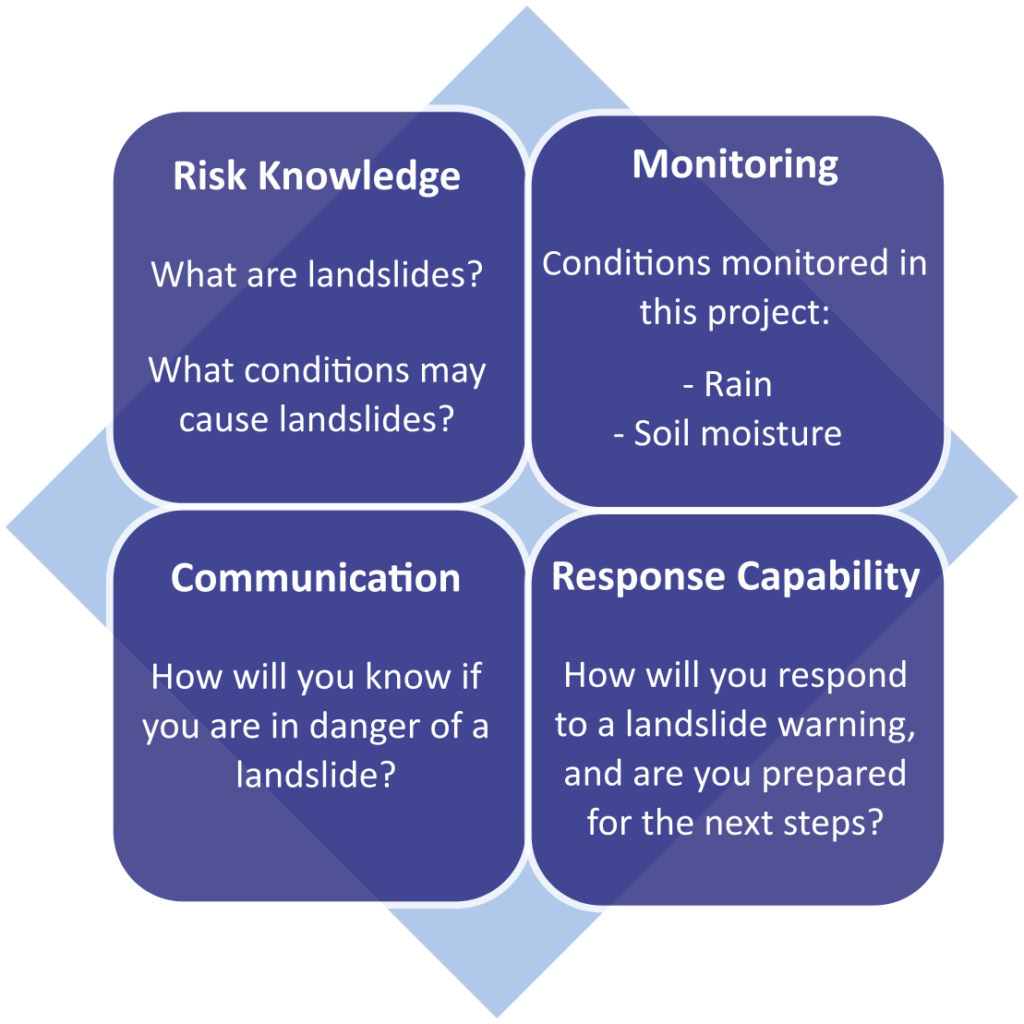
Landslide Research, News, Research
Landslide Research, News, Research
Landslide Research, News, Research
Predicting and Managing the Unpredictable – A Primer on Landslide Risk Management
Landslides are hard to predict. Better scientific information can improve predictions, but there will always be a tension between failed and false warnings. False warnings occur when a landslide is predicted but does not occur. Failed warnings happen when a landslide occurs with no warning. So even the best possible (though still imperfect) warning systems present tradeoffs. To what extent does the community want to limit false alarms, at the expense of some failed warnings? To what extent does the community want to ensure warning for every landslide, at the expense of more false alarms?
Risk Management 101
Risk
Warning is a critical component of risk management as it “enables individuals, communities, governments, businesses and others to take timely action to reduce disaster risks in advance of hazardous events” (UNDRR). But what exactly is risk? Risk is often defined broadly as the effect of uncertainty on objectives. More specifically, it boils down to the relationship between hazard, exposure, and vulnerability.

Checking out the equation above, you may notice that reducing the vulnerability of Sitkans to landslide risk reduces risk overall. One means to reducing landslide risk in Sitka: provide warning of landslides that allows people to get out of the way and reduce the likelihood they would be injured (or worse) by a landslide.
Landslide Warning
So, what makes a warning system successful? It turns out that there are four inter-related components that are necessary to have a strong warning system: 1) risk knowledge, 2) monitoring, 3) communication, and 4) response capability. Risk knowledge involves professional and citizen scientists gaining a better understanding of the specific factors that lead to landslide hazard in Sitka and to the exposure and vulnerability for every person in our community. Our trusty Geoscience Team is on top of the monitoring component, installing and observing the new weather station on Harbor Mountain and soil moisture sensors on our hillsides, which will significantly improve the ability to reduce both failed and false warnings. Our Social Science Team is addressing communication, working to improve how the word on landslide risk and warning is spread through our community and ensure that messages can reach the largest number of people. Finally, response capability, what each individual does in response to a warning, the ability of a community to act on the bases of warning information in a productive way, is up to us. Through actions such as having an evacuation plan in the event of heightened landslide risk, we can increase our response capability and help make the warning system effective at reducing risk.

Sitka’s Landslide Warning System
In designing Sitka’s landslide warning system, the project team is taking what is known as a people-centered approach. More traditional warning systems typically take a hazard-centered approach, envisioning the warning system as a linear chain with emphasis on risk prediction, monitoring, and warning, leaving out community participation and voice in the design and operation of the system. Keeping Sitkans involved in every step, both design-wise and procedure-wise, emphasizes the importance of shared knowledge between the Sitka community and scientists. For instance, engaging in data collection and/or analysis as a citizen scientist can improve one’s understanding of some of the various phenomena that trigger landslides, adding to the many ways that landslide preparedness is approached.
Get Involved
Community members of all ages are already working with the project team to share preliminary warning system design ideas, participate in interviews to help social scientists understand how to disseminate risk, are volunteering to participate in citizen science efforts to monitor rain throughout Sitka’s road network, and most recently, are participating in workshops to discuss and find balance in some tradeoffs that will be incorporated into the design. Contact Cora by emailing csiebert@sitkascience.org if you are interested in any of these efforts. Your participation in this warning system, either big or small, will make a difference in how this system works overall.